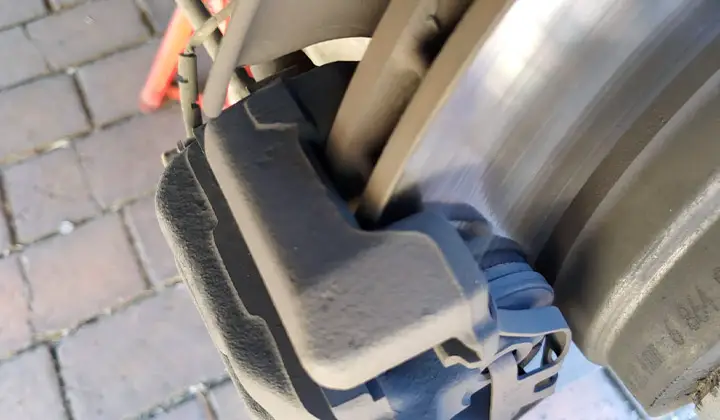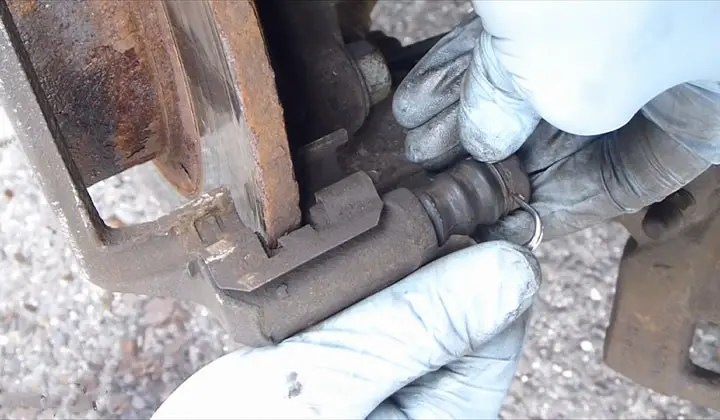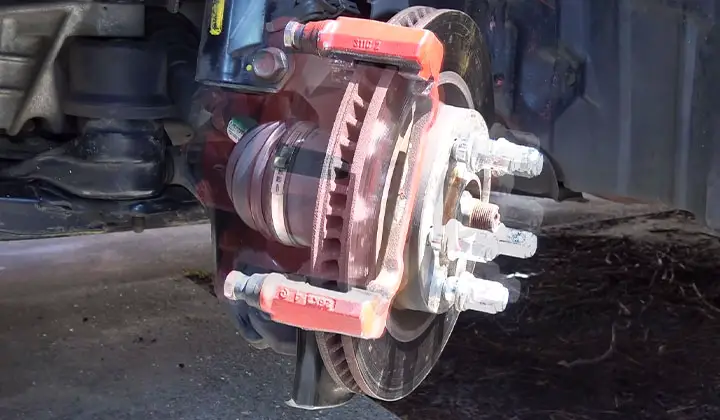When you brake, the pads should make direct contact with the rotor to stop your car in a timely manner. If your brake pads are too far away from the rotor, this can result in reduced braking power and even wear on your brakes over time.
Make sure that your brakes are adjusted properly so that you achieve optimal stopping distance for each type of surface that you will be braking on.
It is also important to clean or replace worn brake pads regularly as this will help ensure a longer life for your equipment and minimize any potential problems down the road.
If you notice any abnormal noises coming from under your car when braking, it may be time to have a technician check out your rotors and pad installation-this could mean serious damage has occurred.
Contents
Are Brake Pads Supposed To Touch Rotor
The purpose of your brake pads is to stop the car. They do this by frictionally pressing against the rotor, which stops the car. If your brake pads are too far away from the rotor, they won’t be able to stop the car as effectively.

This can cause a lot of wear and tear on your brakes, so it’s important that you keep them as close to the rotor as possible.
If you’re noticing that your car’s brake pads are rubbing together, it might be time to replace them. This is a common sign that the rotors need to be replaced as well.
Normal Fitting of Your Brake Pads
When you buy new brake pads, it is important to make sure that they are fitted correctly. The correct fitment will ensure optimal braking performance and longevity. To check if your brakes are fitting properly, take the following steps:
-Remove the wheel and jack up the car as high as possible
-Put a crescent wrench on each axle nut and loosen them by turning anticlockwise
-Pull outwards on both brake calipers until they click into removal position (the pad should now be visible)
Signs That Tell That Brake Pads Are Rubbing
If you notice that your car’s brakes are rubbing, it could be a sign that the pads are worn out. Over time, brake pads can become porous and start to rub against the rotor. If this happens enough, it can cause noise and poor braking performance.
There are a few signs that tell you that brake pads might be rubbing. One of the most common indications is when your car makes a screeching noise when you apply the brakes.
Brake pads should make a squealing sound when they stop rotating, but if they are rubbing against the rotor, then this noise may become louder and more frequent over time.
Additionally, you may notice increased wear on your rotors as well as reduced braking ability in wet conditions.
Reduced Braking Performance
If your brake pads are too far away from the rotor, they will not be able to create as much friction and heat when braking. This will result in a reduced ability to stop your car quickly.
Poor Stopping Power
Brake pads that are too close to the rotor may not have enough material left on them to create sufficient friction, which can lead to poor stopping power and increased wear on your brakes over time.
Increased Brake Wear and Tear
When brake pads are too close to the rotor, they will also rub against it more often, which can cause them to wear out faster than normal. In addition, this type of contact can also leave behind damage that is difficult if not impossible to repair.

If you’re noticing that your brakes are rubbing, there may be a few signs to look for.
For example, if the pads are wearing down quickly or if the surface of the brake pad is beginning to discolor and become pitted, this could mean that the brake pads are in need of replacement.
Shuddering When Stopped
When you brake, your car should stop smoothly without any jerking or shuddering. If you notice that your brakes are causing this kind of movement, it may be a sign that the pads are rubbing against the discs.
Sluggish Acceleration
If braking causes your vehicle to slow down noticeably, it may be because the pads are wearing down quickly and no longer have enough friction to prevent skidding.
Squealing Brakes
If you apply pressure to your brakes and hear an unusual squealing noise, it could mean that one or more of the brake pad surfaces is not properly adhered to the disc rotor surface and is therefore creating excessive wear on the braking system components.

Check for signs of rubbing or wear in any direction
If there seem to be signs of rubbing or wear in any direction other than towards the friction material (i.e., metal against metal), then it’s time for a new set of pads
Compare thicknesses
Make sure that all pads have an equal thickness throughout their entire surface area
How To Stop Brake Pads from Rubbing
One of the most common causes of brake pads rubbing is a dirty or worn rotor. If this happens, the pad will not be able to stop against the disc very well and may start to wear quickly.
To prevent this from happening, you can try cleaning your rotors regularly with a special detergent and a brush, or replace them if they become too damaged.
Make Sure All Hardware is Tight
Brake pads are designed to stop your vehicle from rolling forward or backward, but if they’re not properly fastened down, the pads can rub against each other and create noise.
Loose hardware can also cause rust and corrosion on the brake pad material, which will then lead to premature wear and tear.
Check Your Brake Lines for Leaks
If you notice any signs of leaking brake fluid, it’s important to have it fixed as soon as possible. A leak in your brake lines can cause excessive rubbing between the pads and rotors, eventually leading to a failure.
Change Your Brake Pads When Necessary
You should replace your brakes every 50,000km or 20 years whichever comes first, depending on how often you drive your car in wet conditions or use heavy-handed braking maneuvers.
This will ensure that the pads are always in their best condition and don’t experience undue wear due to repeated friction against the rotor disc surface
Keeping An Eye on Excessive Shaking
Always keep an eye on warning signs such as excessive shaking when slowing down or locking up while driving, which would indicate a need for new rotors or pads right away – don’t wait.
Remember: regular maintenance not only keeps things running smoothly but can save you money in the long run by preventing expensive repairs down the line.
If you have winter tires on your car, it is important that you know how to properly operate your brakes in cold weather conditions as well. Be sure to replace your brake pads every two years regardless of whether or not you use snow tires on your vehicle.
FAQs
How Close Do Brake Pads Sit on Rotors?
The distance is usually about 3-4 inches for most cars and trucks, but it can be as short as 1/4 inch for motorcycles and bicycles.
Why Are My Brake Pads Touching?
The reason why your brake pads are touching is that they have reached their maximum thickness.
Can Brake Pads Be Put on Wrong?
Brake pads can be put on the wrong side of the car. The most common way that people put brake pads on the wrong side of your car would be by using a jack or jack stand.
What Is the Legal Minimum Brake Pad Thickness?
The legal minimum brake pad thickness is 2.5mm.
What Is a Safe Brake Pad Thickness?
A safe brake pad thickness is usually between 0.2mm and 0.4mm, depending on the type of car.
Can I Just Replace Brake Pads and Not Rotors?
The answer is yes and no. You can replace the brake pads without replacing the rotors, but it’s not recommended because it can cause uneven braking and premature wear on your rotors.
If you have a brake job coming up, it’s best to replace both parts at once.
Conclusion
Many drivers think that brake pads are only meant to touch the rotor. This is not the case; in fact, braking too hard can damage your pads and rotors together.
Make sure to replace both pads and rotors at the same time if they become worn down significantly enough – this will extend their life by up to 50%.
It is always a good idea to brake gently and gradually when stopping on an icy or wet surface. Too much force can cause the pads to touch the rotor, causing damage or even a loss of braking ability altogether.
